The world’s most southerly volcano – Mount Erebus (Volcano Week 6)
Monday, 22nd August 2011 by Kyle Kusch
We all know Antarctica as the home of extreme cold, ice, snow, the South Pole, and penguins. Not everything in Antarctica is cold, however, for the Ice Continent is also home to the world’s most southerly volcano.
Rising 3,794 metres (12,448 feet) out of the Southern Ocean at the centre of Ross Island, Mount Erebus sits just over 12 degrees north of the South Pole. Despite being permanently encased in snow and ice, the volcano has not only been continuously erupting since 1972 but also hosts one of the world’s longest-lasting lava lakes.
Erebus was first discovered in 1842 and was first climbed in 1908 by members of Ernest Shackelton’s Nimrod Expedition, who made it all the way up to the massive 4.3 km (2.7 mile)-wide caldera. From above, we can see not just the caldera but the large cone forming in the middle of it.
Zooming in, we can see the gas being emitted from the lava lake at the centre of the cone making its way up the cone’s wall to the left. Amazingly, Erebus has been active for the past 1.3 million years.
Despite the heat being generated at the top of the volcano, this is still Antarctica, and consequently Erebus is covered in white stuff. In high-res imagery, we can clearly see deep cracks and crevasses in the ice wherever the slope gets steep. These dangerous slopes were partly responsible for of one of the most tragic crashes in aviation history. On 28 November 1979, all 257 persons aboard Air New Zealand Flight 901 were killed when the plane slammed into the side of Mount Erebus on a sightseeing trip in whiteout conditions. Most of the wreckage still remains on the mountainside to this day.
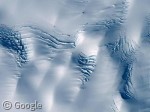
 Photo by Mike Subritzky.
Photo by Mike Subritzky.
Erebus shares Ross Island with three other volcanoes, all of which are extinct. The caldera on top of Mount Terror on the east side of the island still remains visible through the snow despite having stopped erupting nearly a million years ago.
At the southern foot of Mount Erebus lies the unique Erebus Ice Tongue, a large glacier fed by the snow slowly moving down the volcano’s slopes toward the sea ice below. The ice tongue sticks out an incredible 12 km (7.5 miles) into the frozen ocean.
Just south of the ice tongue are two of the largest research stations in all of Antarctica, the United States’ McMurdo Station and New Zealand’s Scott Base. Between the two bases, over 260 people call this peninsula home year-round; that number balloons to over 1,300 in summer.
The stations are served by three airstrips, including the main strip built directly on the sea ice. Zoomed in tight, we can even make out service vehicles hard at work ploughing the snow off the access road.
For those interested in keeping up-to-date with the latest volcanic activity on Mount Erebus, the New Mexico Institute of Mining and Technology operates the Mount Erebus Volcanic Observatory at the foot of the mountain. You can keep track of the eruptions, view the latest scientific data, and even view live imagery during the southern summer at the observatory’s website.
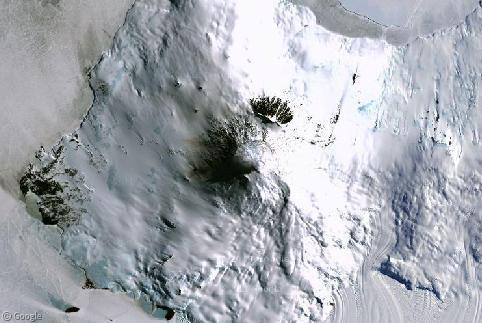
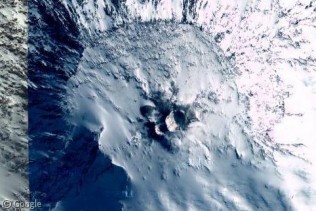
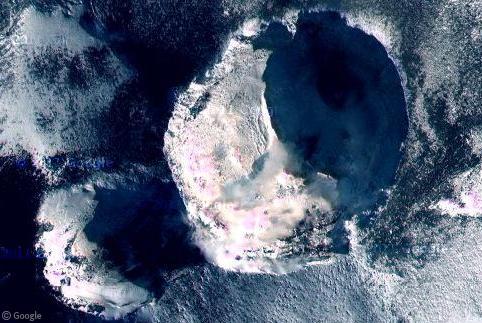
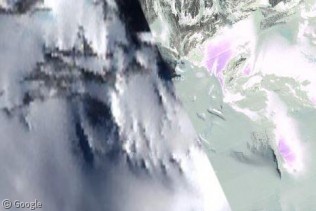
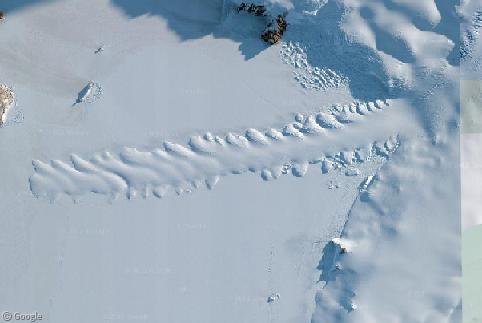
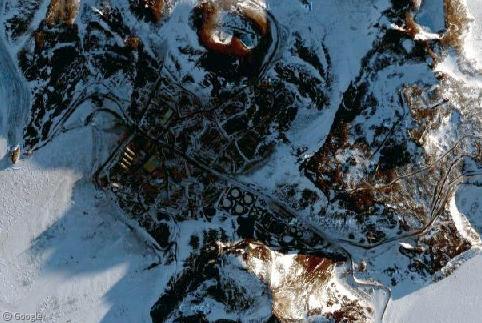
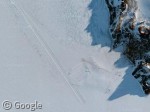
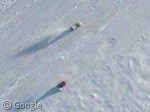
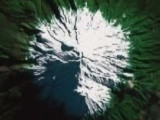
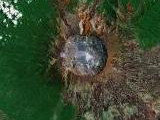
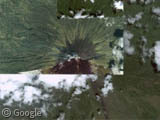
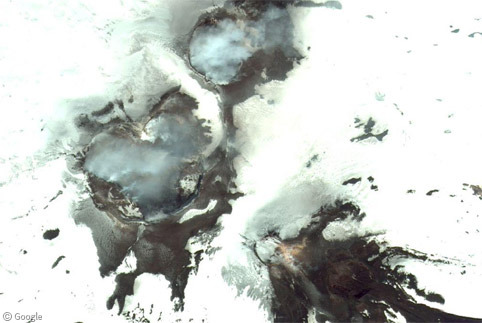
Awesome post!